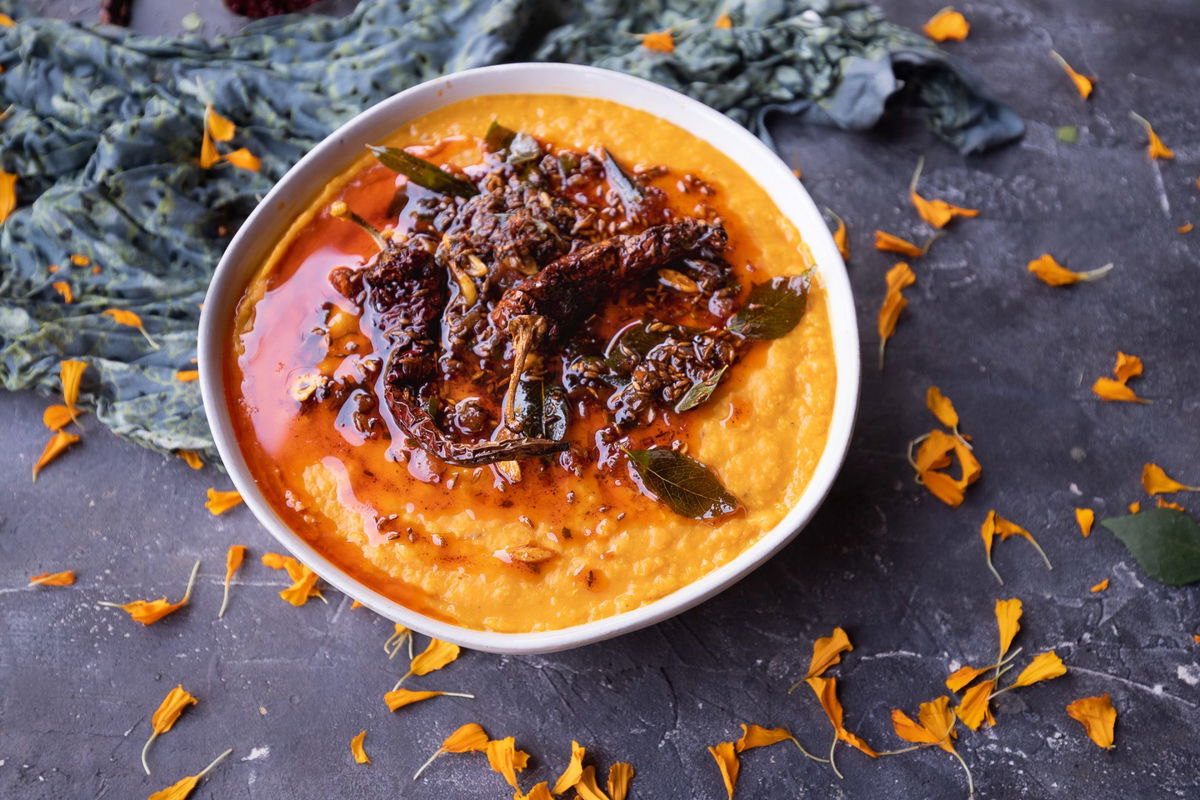When I teach people how to make Indian food, I strive to give them a full understanding of the ingredients they are using. In Indian food, Basmati rice is so fundamental, at a minimum, you should have these four methods of cooking it in your bag of tricks.
Methods 1 & 2: Simple Stovetop Rice
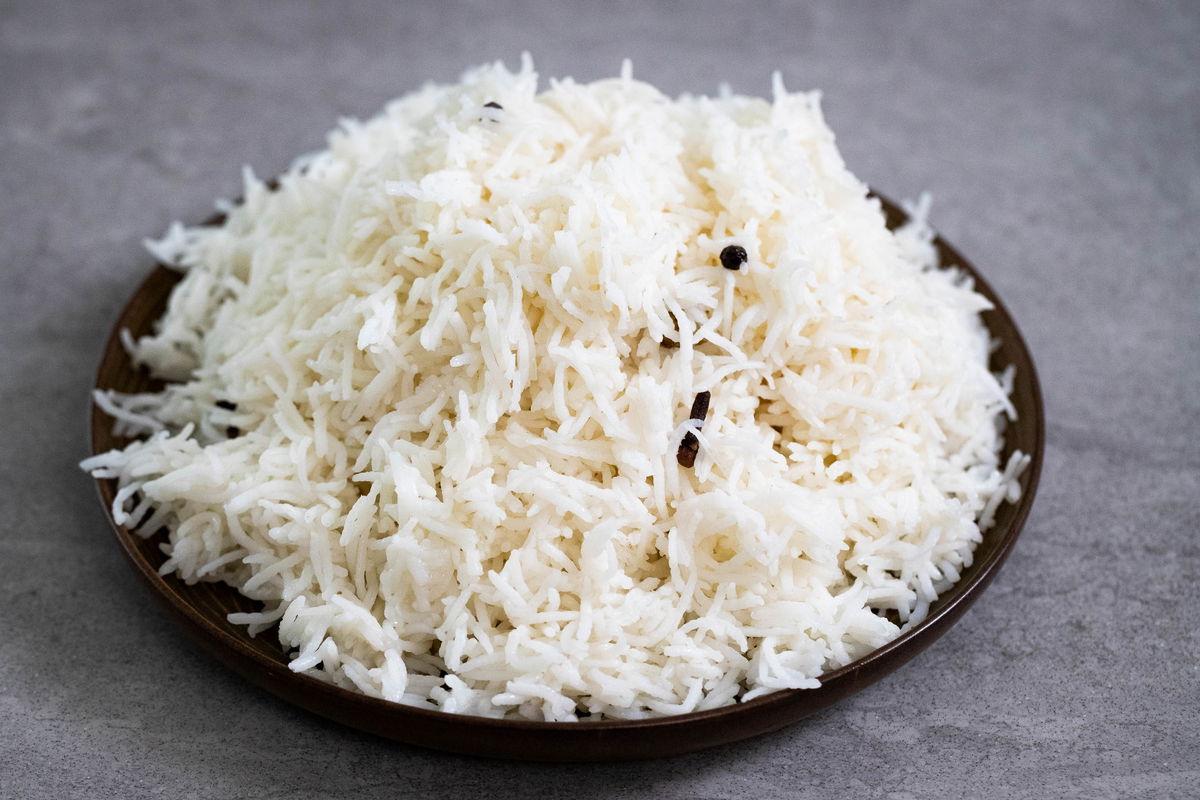
The first two methods of cooking the rice are based on the one you will find on most packages of rice. It is the most straightforward and meant to give you that simple, perfect, no-frills bowl of basmati rice. They are most similar to my original post on how to cook perfect basmati rice.
The difference between the two methods is whether or not you soak the rice. I know many Indians believe it is completely unnecessary to soak rice before you cook it. When I make basmati rice for my family, I almost never soak it. I’m usually making a few other things to go with it.
When making a typical Indian meal, such as dal shaak baath (dal, rice and shaak), my attention is usually more on the dal and shaak than on the rice, and that’s fine.
When I make rice for an occasion, such as when friends or family are coming over for a meal, then I pull out the extra stops and soak the rice. To be honest, I’ve never really noticed much of a difference between the two until I finally tried both methods side by side.
Soaking the rice for a half hour makes for better rice. The grains are longer and fluffier. The soaked rice is the superior rice. That is if you are comparing them side-by-side. Even the most dedicated rice eater would have difficulty recognizing an unsoaked rice bowl without a soaked bowl to compare it to.
- Always rinse the rice until the water runs clear. This will help to remove excessive starch and help with the separation of the grains in your final dish. No self-respecting maker of basmati rice will tell you otherwise.
- Soak the rice for 30 minutes to get an even more perfect bowl. Although you can make a great rice bowl without soaking, the differences between soaked and unsoaked rice are noticeable when compared side-by-side.
Boiled Rice
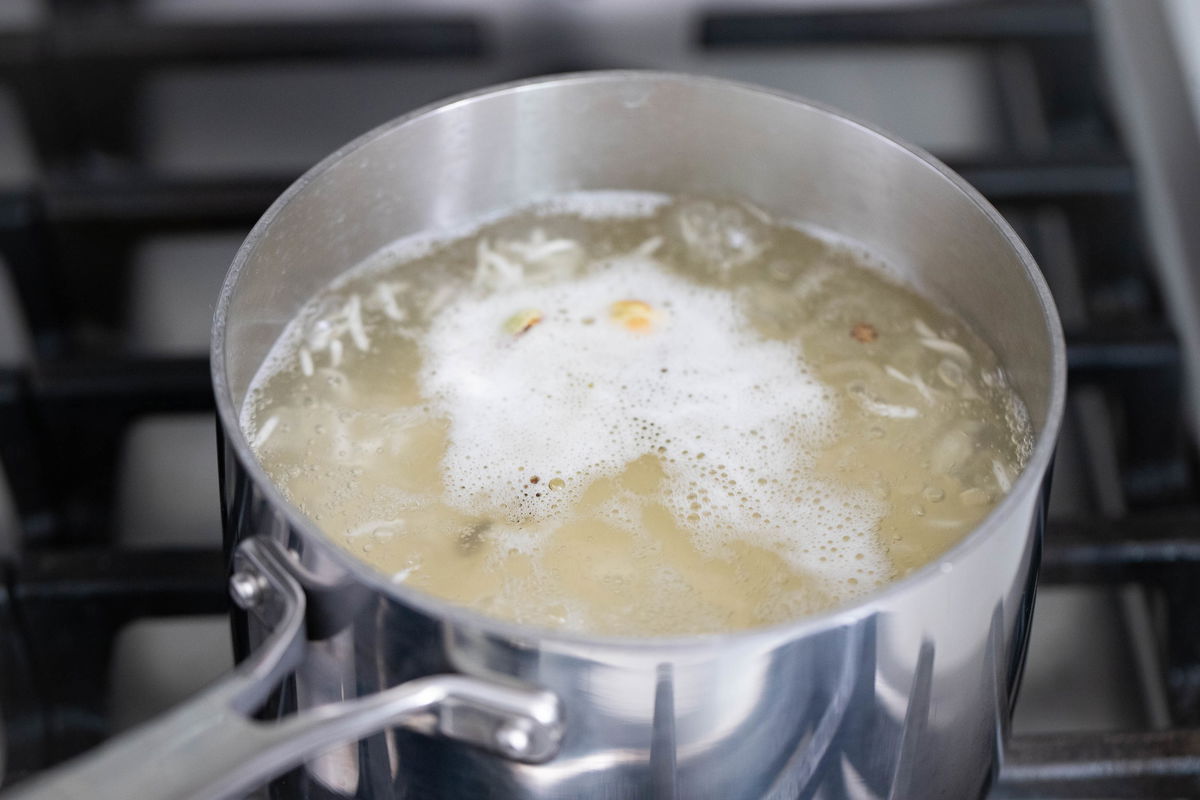
This is a method my mom uses a lot when I was growing up. She tells me this is “the Ayurvedic way” to cook rice. By that, she means “healthier” because it has a much lower starch content. It is also a very reliable way to get a great texture.
This is also commonly used to make biryani, where you parboil the rice before the final cook.
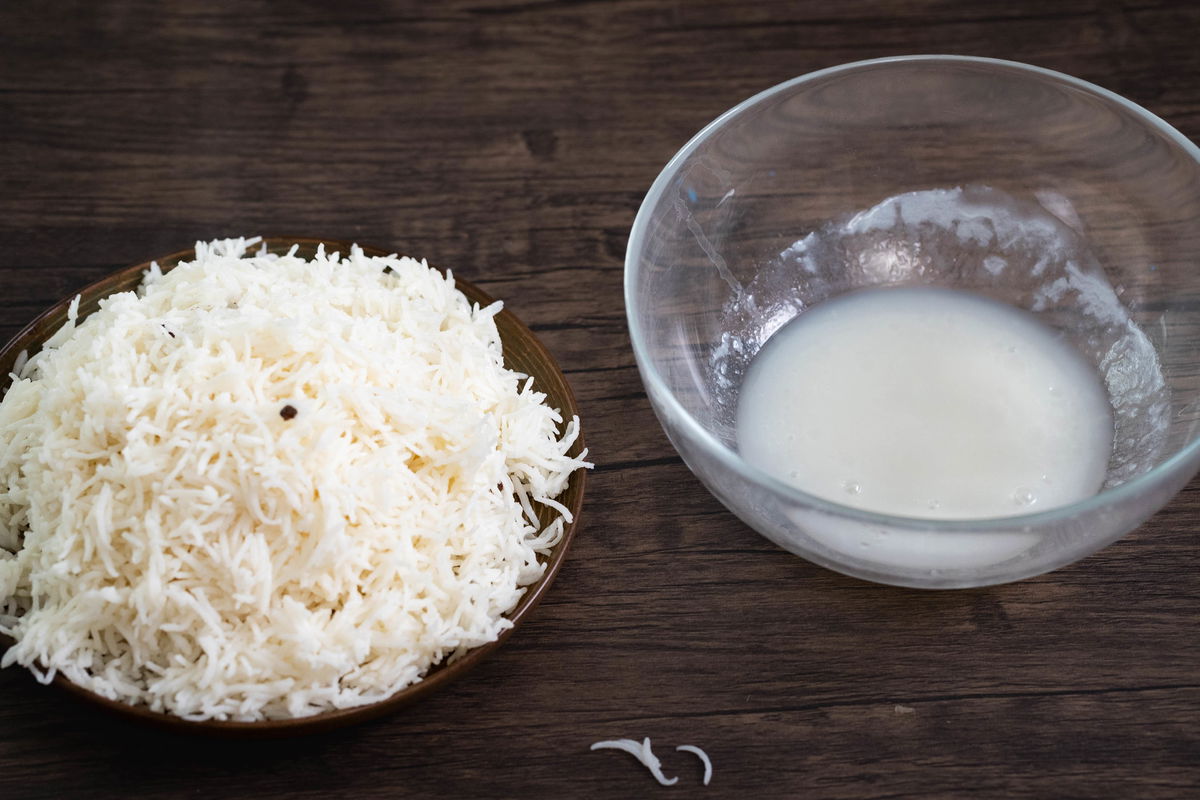
For this method, you start by boiling lots of water. Then you add the rice to the water, boil it with the lid off, and strain off any excess.
- This method is commonly used for making biryani, and this is was also my mom’s favorite method for making rice when I was growing up.
- This rice is very close in texture to the soaked rice. I don’t often use this method because I don’t like having extra dishes to wash, so I also only do that if I’m having guests or if I’m trying to cook rice that has a lower quantity of starch in it.
- This type of rice has a much lower starch content and has a beautiful texture that is a little bit different than the soaked rice when it has cold.
Although I love the texture of rice that is cooked this way, I don’t frequently make rice in this method because I don’t enjoy having extra dishes to wash so I save this rice for a special occasion.
Sautéed Rice
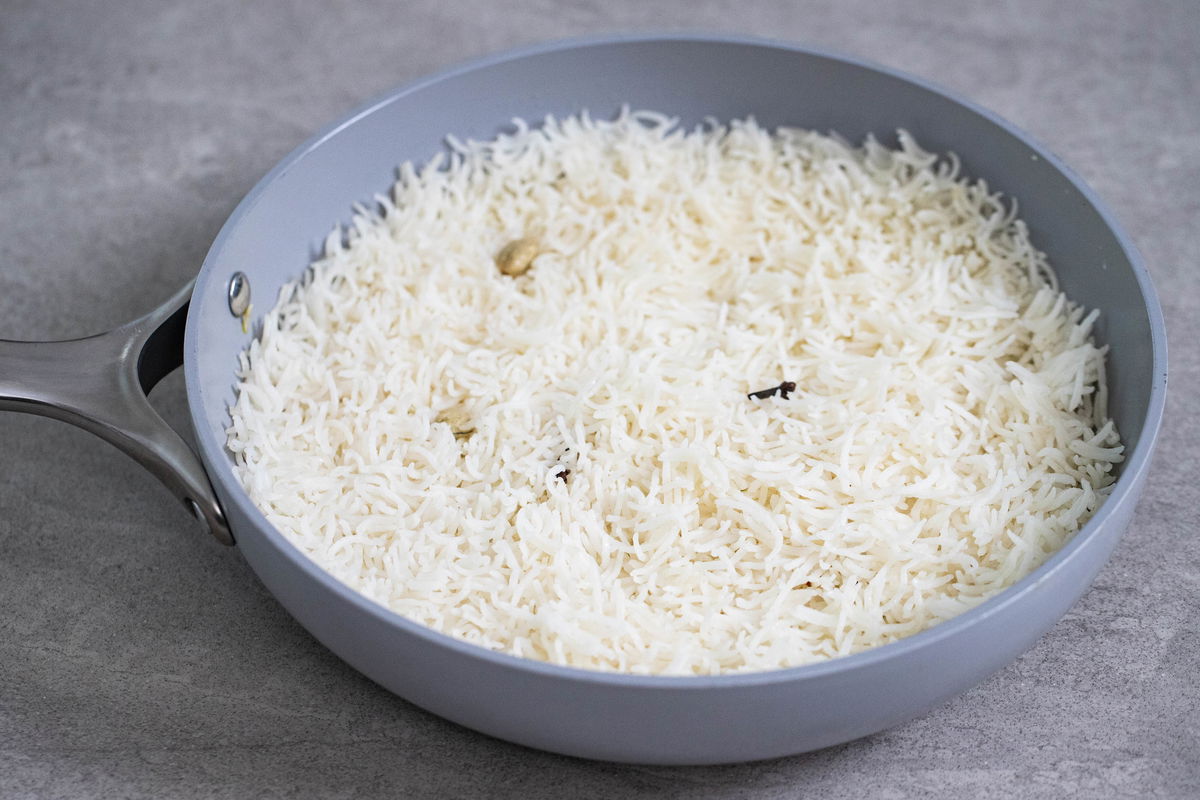
Sauteing rice before boiling it is a technique that is very common in dishes that have something of a Persian influence to them. Whenever I make a pulao, I saute the rice beforehand. Sauteing the rice helps to coat the grains in oil, which helps with separation. And even more than that, it lightly toasts the rice to give it some extra nutty complexity. In addition to pulaos, Mexican rice is traditionally sauteed as well.
To saute the rice, heat your pan and add a tablespoon of ghee or olive oil. Then add your dry rice. Stir frequently so it doesn’t burn. When it starts to turn golden and smells toasty, add the water. Bring it to a boil. Simmer for 12 minutes as above.
4 Ways to Cook Basmati Rice
A comparison of 4 different methods of cooking basmati rice on the stovetop.
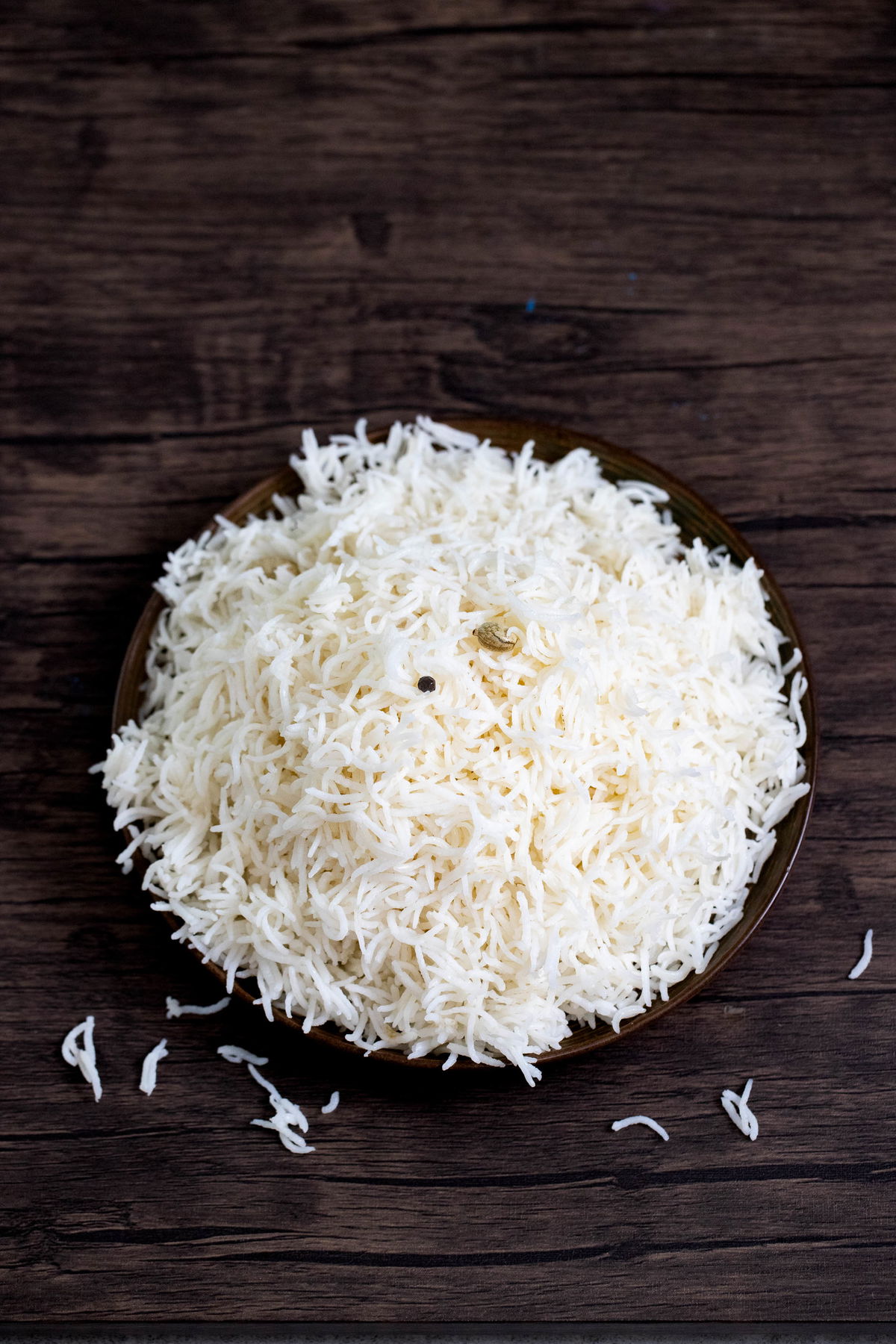
Ingredients
- 1 cup Basmati rice
- 1 tbsp ghee ((or oil))
- 3 black peppercorns ((optional))
- 2 pods cardamom ((optional))
- 2 cloves ((optional))
Instructions
Method 1: No-Soak Rice
- Start by rinsing the rice until the water runs clear.
- Add double the amount of water as rice to a pot. Add a dollop of ghee or oil and fragrant spices of your choice.
- Heat the water over a medium-high flame with the lid off. When the water starts to boil, reduce the flame to low and add a lid. Simmer for 12 minutes.
- Transfer the rice to a plate and fluff with a fork.
Method 2: Soaked rice
- After rinsing the rice, add at least double the amount of water as rice to the pot. Leave it to sit for 30 minutes.
- After 30 minutes, pour out the water and fill with double the amount of water as rice. Add a dollop of ghee or oil and fragrant spices of your choice.
- Heat the water over a medium-high flame with the lid off. When the water starts to boil, reduce the flame to low and add a lid. Simmer for 12 minutes.
- Transfer the rice to a plate and fluff with a fork.
Method 3: Sauteed Rice
- Heat a pan over medium high heat. Add ghee. Add rinsed rice to the pan. Saute the rice until golden and fragrant.
- Add double the amount of water as rice to a pot. Add a dollop of ghee or oil and fragrant spices of your choice.
- Heat the water over a medium-high flame with the lid off. When the water starts to boil, reduce the flame to low and add a lid. Simmer for 12 minutes.
- Transfer the rice to a plate and fluff with a fork.
Method 4: Boiled Rice
- Heat oil or ghee in your pan. Add in the fragrant spices of your choice. Allow them to sizzle in the hot oil.
- Add 4 times the amount of water as you will be making rice. Bring the water to a boil.
- Add the rice and cook for 8 minutes.
- Use a mesh strainer to drain the water from the rice. Fluff and serve.
